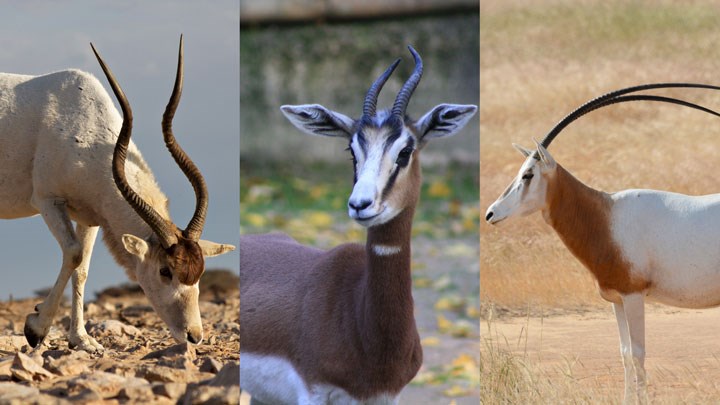
by Karen Mehall Phillips - Friday, April 9, 2021

Top image, from left: The addax, dama gazelle and scimitar-horned oryx were saved from extinction through the conservation efforts of the Exotic Wildlife Association.
“Things that have value have a future in this world. Without a value, these animals will disappear.”—Charly Seale, Executive Director, Exotic Wildlife Association
* * * * * * * * * *
I saw my first axis deer on a free-range hunt in Texas in 2010 and have been mesmerized by the regal spotted animal—and the antlers, horns and striking body markings of Texas’ exotic (non-native) species—ever since. My guide said so many axis deer had escaped from private exotic breeding ranches through the years that they now flourished inside and outside the fences of the Texas Hill Country, the Central and South Texas countryside where climate, terrain and vegetation mimic many exotics’ native lands. When my husband and I looked for a Texas home in 2019, we landed here. Not only did having both native and exotic species mean more hunting opportunities, but the meat of most exotics is tough to beat. I quickly got used to watching for whatever species I might spot on either side of the fences lining nearly every Hill Country road.
Then came February 2021 and Winter Storm Uri. Texas glazed over, bringing historic snow, ice and sub-zero temperatures more in step with the North Pole. Amid news reports of fatalities and a crippling power crisis came images of dead axis deer, blackbuck and other exotics in ranchers’ truck beds, headed for the incinerator. The Exotic Wildlife Association (EWA) reported preliminary exotic livestock losses in excess of $250 million. I had to learn what this level of devastation meant for those who breed and raise these animals and for the species themselves.
I called friends Sandra and Byron Sadler, owners of the renowned Y.O. Ranch Headquarters in nearby Mountain Home, Texas, a premier Hill Country wildlife viewing and hunting destination for both native and exotic wildlife, who attested to heavy losses of their exotics. They put me in touch with EWA Executive Director Charly Seale for the facts on how that one storm wiped out so many conservation successes ranchers in the exotic wildlife industry made over the past 20 years.
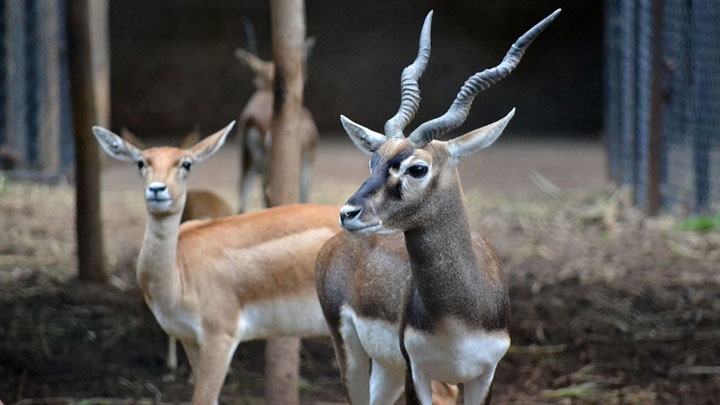
“The preliminary estimate indicates that between $250 and $350 million in exotic livestock and infrastructure were lost, and free-range exotic herds were decimated,” said Seale, who lost 75 percent of his own axis deer and 85 percent of his blackbuck, both of which hail from India. “On top of that, the storm took out the next couple generations as many axis deer does were pregnant and died with their unborn fawns.”
While some animals found shelter in barns and had access to the feed troughs that supplement the vegetation, ranch water lines froze. “We couldn’t get water to them to digest food,” said Seale, who watched animals with full bellies dying because food in their stomachs could not be absorbed. “We were bringing in water three times a day and had to get them out of the shelters and make them drink. But we are resolving things. Our industry is resilient, and we will be back stronger than ever.”
In the meantime, only the axis deer qualifies for indemnity through the U.S. Department of Agriculture (USDA) as only deer species are recognized—and only if the specific deer was being raised for venison production or breeding. Hunting is considered “entertainment.” The EWA is working with U.S. Sen. John Cornyn and Rep. Chip Roy to expand the list of exotic species covered in the future.
When I mentioned the heartbreaking photos of all the dead animals on social media, Seale shared the negative comments the EWA received on Facebook from those who don’t understand what exotic breeders are doing for conservation. “Some were happy the animals perished,” he said. “They said the animals weren‘t meant to be here, but exotics have been here for 80 to 100 years. If not for us [exotic breeders], they wouldn’t be alive. Some are already extinct in their native countries.”
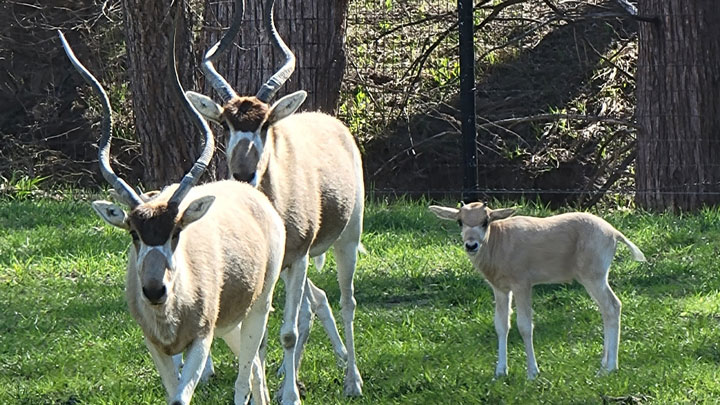
Conveying the Narrative
This is the story that needs to be told. For a glimpse of the great work the EWA does, it is responsible for the conservation of what Texas’ exotic wildlife industry calls “the three amigos”—Africa’s scimitar-horned oryx, addax and dama (or mhorr) gazelle, which vanished from their native North Africa years ago. As magazines such as the NRA’s American Hunter reported in 2012, the three species were relisted as endangered under the Endangered Species Act (ESA) in 2012. But with no hunting, their populations fell significantly. The EWA and its lobbyist stepped in and worked with Rep. John Carter (R-Texas) to get a bill passed in Washington, D.C., exempting the three species from ESA protections.
“Our bill was attached to a $1.1 trillion omnibus spending bill President Obama wanted,” Seale said, “so I got a call in the 11th hour to verify the numbers of animals we had. We were the only ones with true numbers of these animals.”
President Obama signed the bill into law in January 2014, including the provision directing the Secretary of the Interior to exempt the scimitar-horned oryx, addax and dama gazelle from the ESA. Removing federal controls incentivized ranchers to maintain populations of the animals that now could be sustained through revenue that came from hunting. Hunters are often told which animals to shoot, targeting the select few that are past breeding age. Today, instead of being wiped off the map, these animals are thriving across thousands of Texas ranches.
“Ranchers are businessmen and women,” said Seale. “The bottom line is that they must be in the black. Ranchers who are unable to dictate hunt terms will simply shift to other animals.”
Referencing the constant struggle to combat misleading information purported by animal rights extremist groups, Seale said, “The HSUS [Humane Society of the United States] then filed suit, but the Supreme Court struck it down. Then the HSUS filed an appeal with the Federal Appeals Court and it, too, knocked it out because of the provision being a mandatory statute from Congress.”
When I mentioned to Seale how many people mistakenly believe the EWA is only about hunting exotics, he said, “That can’t be farther from the truth. We’re here as the last bastion for exotic species.”
And then there is the EWA’s behind-the-scenes work. “You see a few representatives of these three species in preserves and zoos today because of the EWA. We built a 400-acre preserve in Senagal in northwest Africa for the scimitar-horned oryx and partnered with the Sahara Conservation Fund to transport new bloodlines to the preserve—12 breeding pairs.”
As for one of the other three amigos—the dama gazelle—I was told one particular EWA member has worked for decades behind the scenes on his 50-acre ranch just five minutes from me. He is largely responsible for propagating the species, which disappeared from the wild in 1973. Thanks to the EWA, other exotic species also thrive in Texas despite struggles in their native lands.
Thinking Outside the Box
According to Seale, the group that eventually became the EWA got its start in the 1950s. As droughts and fluctuating livestock markets hit ranchers hard, then-YO Ranch owner Charles Shreiner III—grandson of Hill Country rancher-philanthropist Capt. Charles A. Shreiner, who began amassing the ranch’s then-556,000 acres in 1880—began purchasing excess exotic animals for hunting from the zoo. But zoos stopped selling exotics and ranchers had to raise and breed them themselves.
“The traditional livestock industry was not taking care of exotic wildlife ranchers,” said Seale. “Many ranchers viewed exotics as invasive species that took resources from traditional livestock.” In 1967, Schreiner III formed the EWA, the industry’s trade association and lobbying arm. More than a half-century later, exotic wildlife ranchers sell and trade animals with each other at auctions, paying close attention to the often-pricy animals’ pedigree. In addition to animals, ranchers sell straws of semen from their prized breeder bucks, bulls and rams as buyers work to maximize the most desirable genetic traits that translate to better herd health and growth.
“Today the EWA gives exotic breeders a voice, Seale said. “Our members raise more numbers of endangered and exotic species in the world—130 in Texas. We’re a conservation group, not a hunting group, but we promote hunting as a management tool.” In fact, a June 2020 article titled “The Texotics” in Texas Observer magazine, regarding how hunting keeps exotic populations in check, makes room for new bloodlines and maintains a healthy amount of competition among breeding males.
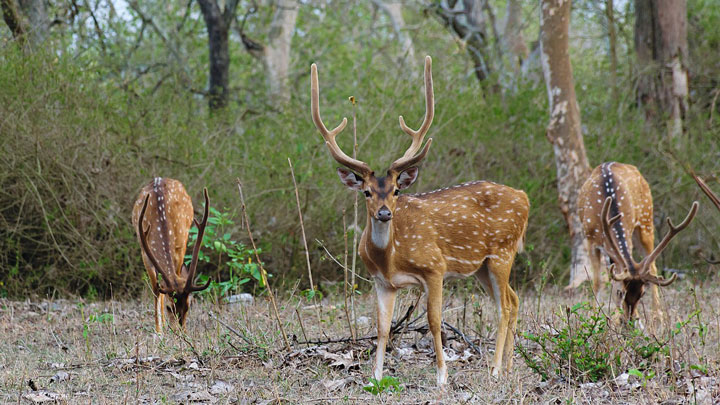
Seale, who has been the group’s executive director since retiring from the Texas State Highway Patrol in 2002, became fascinated with exotics in high school after spotting his first axis deer when a herd of free-ranging axis took up residence on his family’s ranch. “I shot one and we processed it and ate it, and there was no better table fare,” he said. “And then there is the fact that so many of the species are extinct, endangered or threatened in their native countries.” Seeing the opportunity to make a difference, the third-generation livestock rancher said that once he took over the family business in 1984, he got rid of the cattle, put up a high fence and began his quest to conserve.
Conservation in Action
I met Seale in person that following weekend when my husband and I attended the 54th EWA Annual Membership Meeting on Mar. 12-13 to learn more about the exotic wildlife industry. Wildlife biologists, veterinarians and other experts in the field presented special sessions on topics such as anthrax, range management and nutrition. The session on herd health extended all the way down to the importance of knowing what perennial plant species are in one’s pasture to prevent toxic plant poisoning. If you’re raising grazing animals of any kind, you already know such things, but now I too considered certain field perennials potential agents of death. Lantana has toxins in the roots and stems that harm a grazing animal’s liver. Senna causes myopathy and oak buds harm kidneys. Of course, it is this bright, eye-catching greenery that shows up first come spring. Animals seek it out if ranchers don’t provide a good mineral supplement so there is something else to eat. That’s literal food for thought.
The group raised more than $100,000 during its Friday night Grand Auction, and its animal video auction the following day brought $963,000. Maybe saving the best for last, three mature bongo went up for sale. As the bidding increased, I thought of how this lot had multiple animals and one must remember to multiply that bongo dollar amount by three. The winning bidder paid $58,000—times three—as Seale stood at the podium next to auctioneer Charlie Jones and said, “I think we set a record today.”
The Damage of Misinformation
Using the case of the scimitar-horned oryx, addax and dama gazelle as an example, as reported by McClatchy.com in 2012, “Their [the three species’] very existence here depends on a tension between survival and death.” To protect these species, ranchers say we must hunt them. Considering these species’ populations totaled just a couple dozen upon arrival in Texas in the late 1970s and surpassed 17,000 by the EWA’s 2010 census, Seale explained the decision to hunt them is a “no-brainer.”
But that is not the story the public hears. Instead, animal rights extremist groups undermine conservation successes with misinformation, lawsuits, ballot initiatives and legislation. Priscilla Feral, president of Friends of Animals, is on record saying, “I'd rather see them [the three amigos] extinct in Texas than be shot by hunters. They don't belong in Texas.” Yet these species, and many others, would be long gone without it.
As the NRA Hunters’ Leadership Forum website reports, those who distort the role of legal, regulated hunting say it harms conservation all while hunters and public and private partnerships are busy churning out the powerful economic incentives to purchase, raise and feed the animals and fund the infrastructure that saves species. Hunting’s additional worldwide benefits include engaging rural communities in conservation and sustaining counter-poaching efforts. Why doesn’t the public know this? Who else will fund the survival of the world’s wildlife?
The key takeaway from all this: In a world driven by economics where increasingly tough decisions must be made on how to distribute resources, the survival of Texas exotics, and every other species, will depend on whether they have value. In the words of Charly Seale, “This is why the EWA must exist into the future.”
* * * * * * * * * *
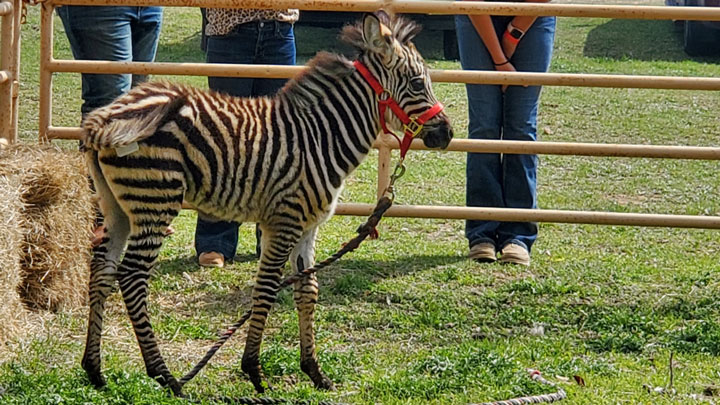
While many exotics perished in the snowstorm, the industry is thriving. On Mar. 26 the author attended a live exotic animal auction at the YO Ranchlands where the final animal up for sale was a spunky little bottle-fed zebra. Her first thought: "If only my Texas property were fenced …"
The EWA’s Story: Conservation through Commerce
Thanks to a group of ranchers with a vision for the exotic wildlife’s future, 54 years later the EWA remains the first line of defense in preserving the rights of exotic wildlife owners and exotic species. It thwarts the misrepresentations of animal rights extremists while educating policymakers and the public on the need for the sustainable use of wildlife as a tool in managing carrying capacity. It believes the concept of conservation through commerce is the answer to preserving wildlife and suitable habitat, representing members in the United States and several foreign countries that protect some of the largest populations of privately-owned exotic wildlife. For more information, click here.
History of Exotics in Texas
According to the Texas Parks and Wildlife Department (TPWD), the term “exotic” refers to the medium- to large-sized non-native mammals and birds that were introduced onto Texas’ high-fence and free-range lands. Most fall under three scientific families: Cervidae (deer), Bovidae (antelope and cattle) and Equidae (zebras and horses). Exotic birds belong to the Ratite family and are the flightless species such as the ostrich from Africa and emu from Australia. The TPWD traces the first release of exotics to 1930 when nilgai antelope, originally from India, were released on South Texas’ King Ranch. Most exotics dwell in the Hill Country’s Edwards Plateau region with South Texas accounting for most free-ranging animals. When hunting whitetail deer in the area, you may see an axis or, as my friend saw, an eland strolling by his stand. With a Texas hunting license, you can shoot exotics year-round as it is always open season. Because elk are not native to Texas, they, too, are exotics here so keep your eyes peeled when hunting the Lone Star State.
About the Author
An NRA Endowment member, Karen Mehall Phillips is an avid hunter and the director of communications for the NRA Hunters’ Leadership Forum. She is invested in fighting America's culture war on hunting and works to shed light on animal rights extremists’ blatant attempts to tout emotion and misinformation over scientific facts. Karen worked in the NRA public relations arena before joining NRA Publications in 1998. She is the founding editor of two NRA official journals, America's 1st Freedom and Woman's Outlook, and a founding member of the Professional Outdoor Media Association. National writing awards include being named the 2015 Carl Zeiss Sports Optics Writer of the Year.
E-mail your comments/questions about this site to:
[email protected]
Proudly supported by The NRA Foundation and Friends of NRA fundraising.
